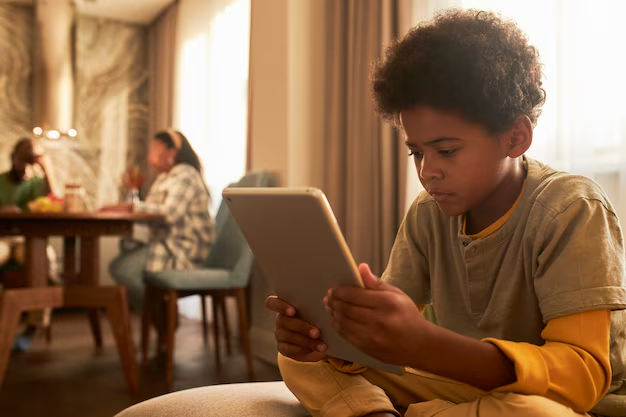Practical tips for managing your child’s screen time

In today’s digital age, screens have become an integral part of our daily lives. Whether it’s educational content, interactive games or simply watching cartoons, children are increasingly drawn to the myriad of devices that surround them.
As parents, finding the right balance between beneficial screen time and ensuring it doesn’t become overwhelming can be challenging, especially now that schools are closed. The delicate task lies in guiding our children towards a healthy relationship with screens without completely depriving them of the valuable experiences they offer.
Understanding the role that screens play in our children’s lives is the first step to effectively managing their usage. It’s essential to recognize that not all screen time is created equal. Educational programs, interactive learning apps, and creative digital tools can provide significant benefits, such as improving cognitive skills and enhancing creativity.
However, the key lies in moderation and ensuring that screen time does not replace other critical activities like physical play, social interaction, and rest.
 One effective approach is to establish clear boundaries and consistent rules regarding screen time. Children thrive on routine, and setting specific times for when screens can be used helps them understand limits. For instance, you might designate screen time only after schoolwork is completed or during certain hours on weekends. This structure not only prevents excessive use of digital gadgets but also teaches children about self-discipline and time management.
One effective approach is to establish clear boundaries and consistent rules regarding screen time. Children thrive on routine, and setting specific times for when screens can be used helps them understand limits. For instance, you might designate screen time only after schoolwork is completed or during certain hours on weekends. This structure not only prevents excessive use of digital gadgets but also teaches children about self-discipline and time management.
Moreover, being actively involved in your child’s screen activities can make a significant difference. Co-viewing or participating in the digital content they engage with allows you to monitor what they are exposed to and fosters bonding.
It also presents opportunities for discussions about what they are watching, making it an educational experience rather than passive consumption. By showing interest in their digital world, you create an environment where they feel comfortable discussing what they encounter online, leading to healthier screen habits.
Encouraging alternative activities is another crucial strategy. Children often turn to screens out of boredom, so providing them with a variety of offline activities can reduce their reliance on digital entertainment. Engaging in outdoor play, reading books, or exploring hobbies such as drawing or building can capture their interest and diminish the allure of screens.
 Additionally, ensuring that they get enough physical activity is essential for their overall health and well-being, contributing to a more balanced lifestyle.
Additionally, ensuring that they get enough physical activity is essential for their overall health and well-being, contributing to a more balanced lifestyle.
Lastly, the importance of leading by example cannot be overstated. Children are keen observers, and they often mirror the behaviours they see in their parents. Demonstrating a healthy relationship with screens yourself—such as limiting your own screen time, prioritising face-to-face interactions, and setting aside devices during family meals—sends a powerful message. This not only reinforces the rules you set but also helps in creating a family culture where screens are not the focal point of daily life.
In conclusion, managing your child’s screen time requires a thoughtful approach that combines structure, engagement, and example-setting. By creating a balanced digital environment, you help your child develop healthy screen habits that can benefit them in the long run. The goal is not to eliminate screens from their lives but to ensure that they complement other essential aspects of childhood, nurturing their growth in a well-rounded and holistic manner.







